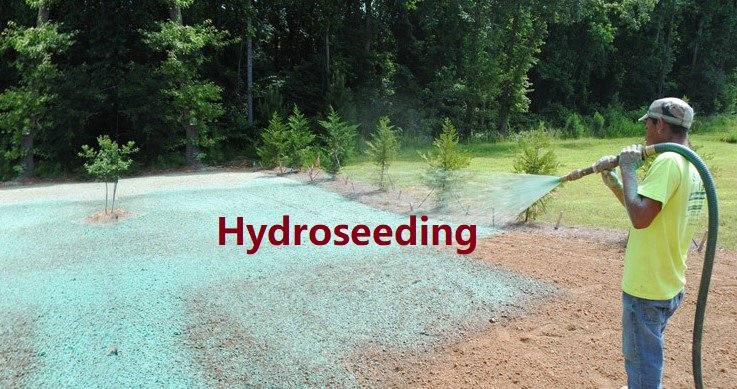AWIP, Environment & Ecology, GS P6 (Economy, Geography, Environment...)
Q. What do you understand by “Hydroseeding”? What are the environmental benefits of hydroseeding compared to traditional sodding methods?
Hydroseeding is a method of planting seeds by spraying a mixture of water, seed, mulch, fertilizer, and sometimes tackifiers onto the ground. This slurry is applied using specialized equipment, creating a uniform and even distribution of seeds. It is a widely used technique for controlling erosion and promoting vegetation growth on bare or disturbed soil surfaces.
Key components of a hydroseeding mixture:
- Water: Acts as a carrier for the other ingredients.
- Seeds: The desired plant species to be established.
- Mulch: Protects the seeds from erosion, retains moisture, and helps in germination.
- Fertilizer: Provides essential nutrients for seed growth.
- Tackifier: Helps bind the mixture to the soil, preventing erosion.
Hydroseeding offers several environmental advantages over traditional sodding methods:
Erosion Control
- Superior Coverage: Hydroseeding creates a uniform, protective layer of mulch that binds to the soil, preventing erosion better than sod, especially on slopes.
- Rapid Establishment: The quick germination of hydroseeded grass helps stabilize soil faster than sod, reducing erosion risk.
Water Conservation
- Moisture Retention: The mulch used in hydroseeding helps retain soil moisture, reducing water runoff and evaporation.
- Reduced Irrigation: Established hydroseeded lawns often require less irrigation compared to sod, conserving water resources.
Soil Health
- Improved Soil Structure: The mulch in hydroseeding enhances soil structure, promoting better water infiltration and aeration.
- Nutrient Cycling: Hydroseeding can incorporate organic matter into the soil, improving its fertility and nutrient-holding capacity.
- Native Species: Hydroseeding allows for the use of native plant species, promoting biodiversity and supporting local ecosystems.
- Reduced Pesticide Use: Hydroseeded lawns often require fewer pesticides, minimizing chemical pollution.
Resource Efficiency
- Less Waste: Hydroseeding generates less waste compared to sod production and transportation.
- Lower Energy Consumption: The process of hydroseeding typically requires less energy than sod production and installation.
By addressing these environmental factors, hydroseeding contributes to a healthier ecosystem and more sustainable land management practices.


